Fast-Growing Vegetables and Herbs You Can Harvest Quickly
Do you want to start a vegetable garden and harvest quickly? Try planting a few of these fast-growing vegetables in your garden! You can harvest in as little as 30 days, depending on the vegetable and variety.
While some vegetables may take a long time to mature, many do not. This makes them perfect for beginners and those eager to see quick results!
Fast-growing vegetables are also easy to grow, allowing you to enjoy fresh produce sooner.
They can also thrive in most spaces, including large and small gardens, balconies, and side yards or patios. And they’re perfect for container gardens!
With this list, discover a range of vegetables that suit your needs, from leafy greens to root veggies. Let’s get started!
Getting Started with Fast-Growing Vegetables
If you’re new to gardening or want to experiment, fast-growing vegetables are a great starting point, especially with the tips below.
Here are some tips to help your garden produce quickly:
Choose the Right Vegetables
Not all vegetables mature at the same rate. Some, such as tomatoes and peppers, can take months to produce fruit, while others, like radishes and leafy greens, can be harvested in just a few weeks.
When selecting vegetables to grow, opt for varieties that are labeled as fast-growing or look at the time to mature date on the seed packet.
Prepare Your Soil
Choose a good soil mix made for vegetables. Make sure it’s loose and well-draining, and add compost, organic matter, or fertilizer. Any garden center should have an organic soil mix made for vegetables, fruits, and herbs.
The one I use at home is from Kellogg Garden; they have an excellent organic product line.
Plant for the Right Season
The timing of your planting can also affect how quickly your vegetables will grow.
When temperatures are colder, planting in the spring or fall can help your vegetables grow faster if they’re cool-weather crops, such as carrots, radishes, and spinach.
Make sure to plant each vegetable during the right season. A little planning will go a long way!
Provide Plenty of Water and Sunlight
Fast-growing vegetables need plenty of water and sunlight to thrive.
Most vegetables and fruits need around six hours of direct sunlight each day. If you can’t provide that, try choosing varieties that don’t need that much sunlight to produce fruit and can grow in shade gardens.
Vegetable plants also need well-watered soil that never goes bone-dry. Underwatering, especially on hot days, can shock your plant and stop it from growing.
Always touch-test the soil at least every few days to ensure that the soil is still moist.
Try Container Gardening
You can still grow fast-growing vegetables in containers; you don’t need a large yard to grow your own food!
Choose a large container for your plants to grow in, and always make sure to provide drainage holes, which helps prevent overwatering mishaps.
Look into raised garden beds, too. These days, there are plenty of sizes and materials to choose from, and they can accommodate almost any space.
Taller raised gardens are easier on the back and knees and can make gardening easier and more accessible. (I love my tall raised bed from Vego Garden)
Choose Leafy Greens for Ultra-Fast Harvest
Leafy greens are famous for their quick harvest times.
That’s great news for all gardeners – considering they’re so nutritious! There are plenty of varieties that will give you a quick harvest. Here are just a few:
Spinach (30-45 Days)
Spinach is a classic leafy green that’s easy to grow and matures quickly. Spinach is one of the most nutritious plants you can grow, especially when fresh off the stem.
Spinach loves colder temperatures, though, so make it part of your fall garden design.
You can harvest it when the leaves are about 2-3 inches long, usually taking about 30 days. For more info on this leafy green, head to my post on How to Grow Spinach.
Arugula (40-60 Days)
Arugula is a flavorful green with a peppery taste. It’s a pretty fast grower; you can harvest the leaves about 40 days after planting.
Like spinach, arugula prefers cooler temperatures, so it’s a good choice for early spring or fall planting. Harvest the leaves when they’re about 3 inches in length.
Lettuce (30-55 Days)
Lettuce is another classic leafy green that’s easy to grow and matures quickly.

There are many different varieties to choose from and enjoy. Grow in the spring or fall, as lettuce prefers cooler temperatures.
You can harvest it when the leaves are about 2-3 inches long, usually taking about 30 days.
Kale (25-30 Days)
Kale is a nutrient-dense green that’s become increasingly popular in cooking. You can even make them into flavorful chips!
It’s a fast grower, with leaves ready to harvest in just 30-40 days. Kale tolerates low temps, and you can harvest the leaves when they’re about 2-3 inches long.
Bok Choy (35-45 Days)
This Chinese cabbage is both easy to grow and adds a slight crunch to vegetable sautes!
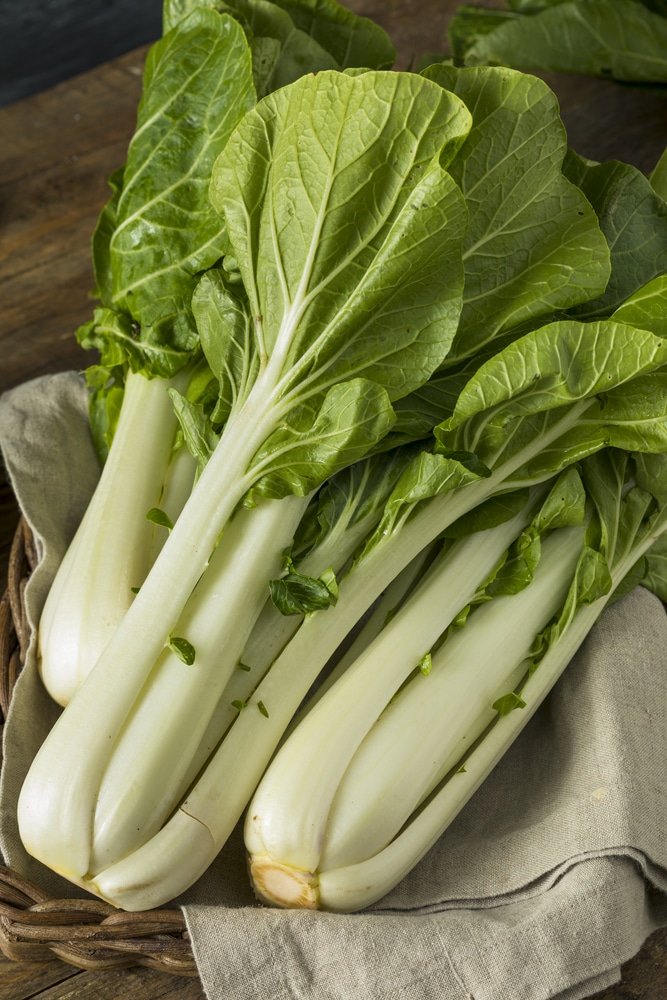
It’s also a fast grower, with leaves ready to harvest in about 35-45 days.
Bok choy prefers cooler temperatures, so it’s a great fall vegetable. You can harvest the leaves about 2-3 inches long.
Remember that leafy greens are great choices if you’re looking for a quick harvest. But that’s not all – they’re incredibly easy to grow so they’re a great option for gardening beginners.
If you’re new to vegetable gardening, I recommend starting with an herb garden and a container garden full of leafy greens!
Root Vegetables with Rapid Growth
If you want to grow a vegetable garden quickly, root vegetables are another excellent choice.
These vegetables grow quickly and can be harvested in a matter of weeks.
Here are three root vegetables that are known for their rapid growth:
Radishes (20-50 Days)
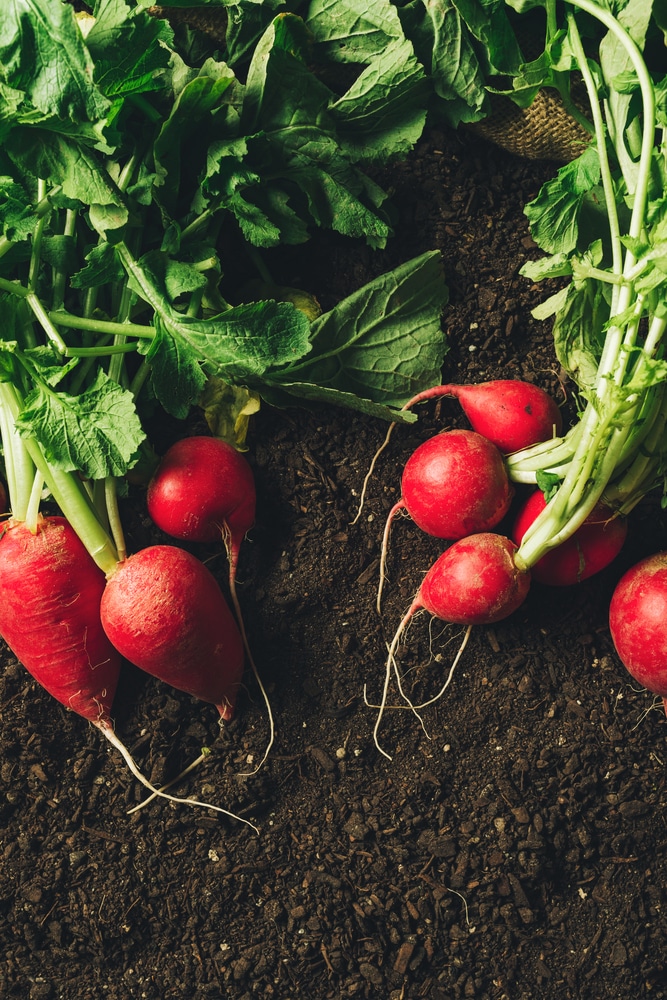
Radishes are super fastest-growing.
They have a spicy flavor, are perfect in salads, and even work as a soup topper.
You can start harvesting a few weeks after planting. Keep in mind, though, that this is a cool weather crop. Don’t include them in your summer garden.
Carrots (50-60 Days)
This fast-growing root vegetable comes in many varieties, colors, and sizes.
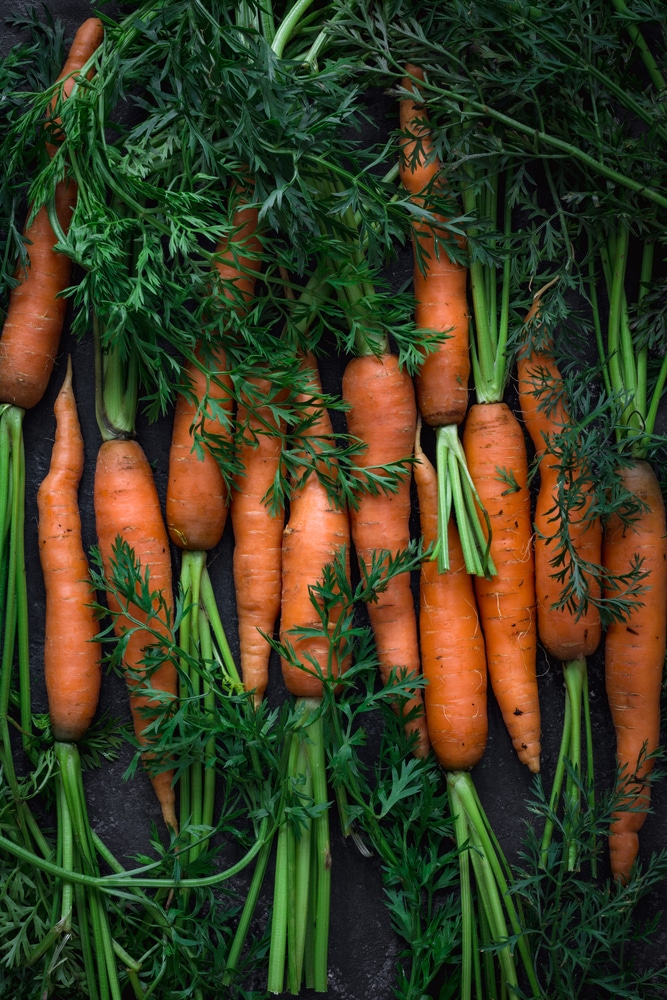
They can usually be harvested in less than two months. It’s another cool-weather crop.
Grow them in loose soil and water generously, then enjoy!
Beets (50-60 Days)

Beets are so versatile and full of color and nutrients. Luckily, they’re also fast-growing and pretty low-maintenance.
Turnips ( 50-60 Days)
Turnips are another fast-growing root vegetable that is easy to grow.
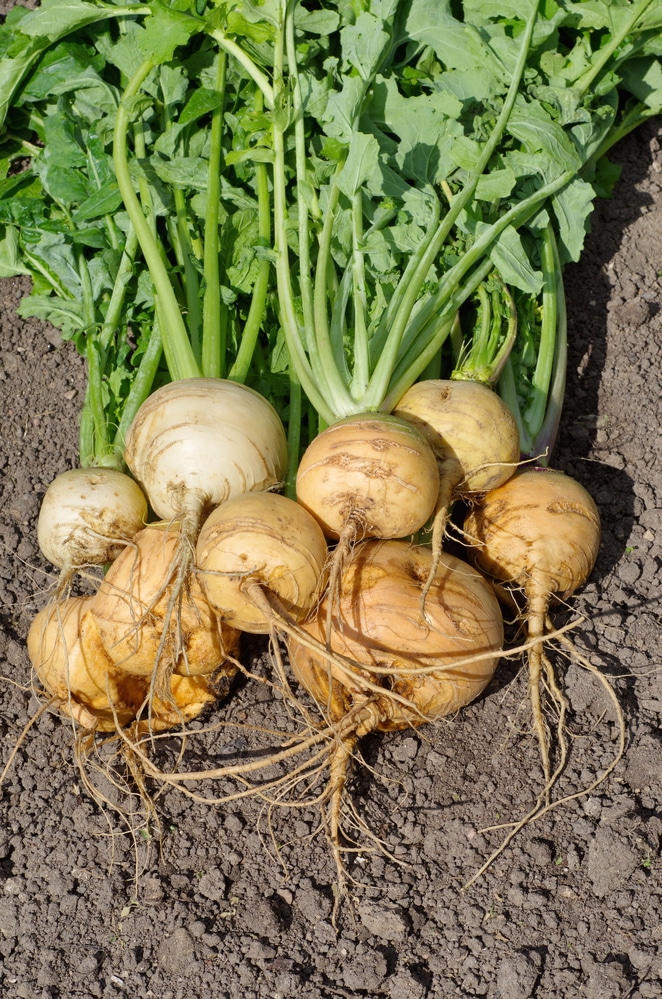
Turnips can be ready to harvest in about 30-50 days after planting. They grow best in cool weather and prefer well-drained soil.
Root vegetables are a great option if you’re looking to grow a vegetable garden quickly.
Speedy Legumes
If you’re looking for fast-growing vegetables, legumes are a great choice.
Not only are they easy to grow, but they’re also rich in protein and other important nutrients. Plus, you can grow them from seed!
They’re one of the easiest plants to grow from seed but remember to plant A LOT of seeds if you want to get a decent amount of beans.
Here are two legumes that grow quickly and produce delicious results:
Green Beans (50-60 Days)
Green beans are incredibly low-maintenance and a good choice for beginners.
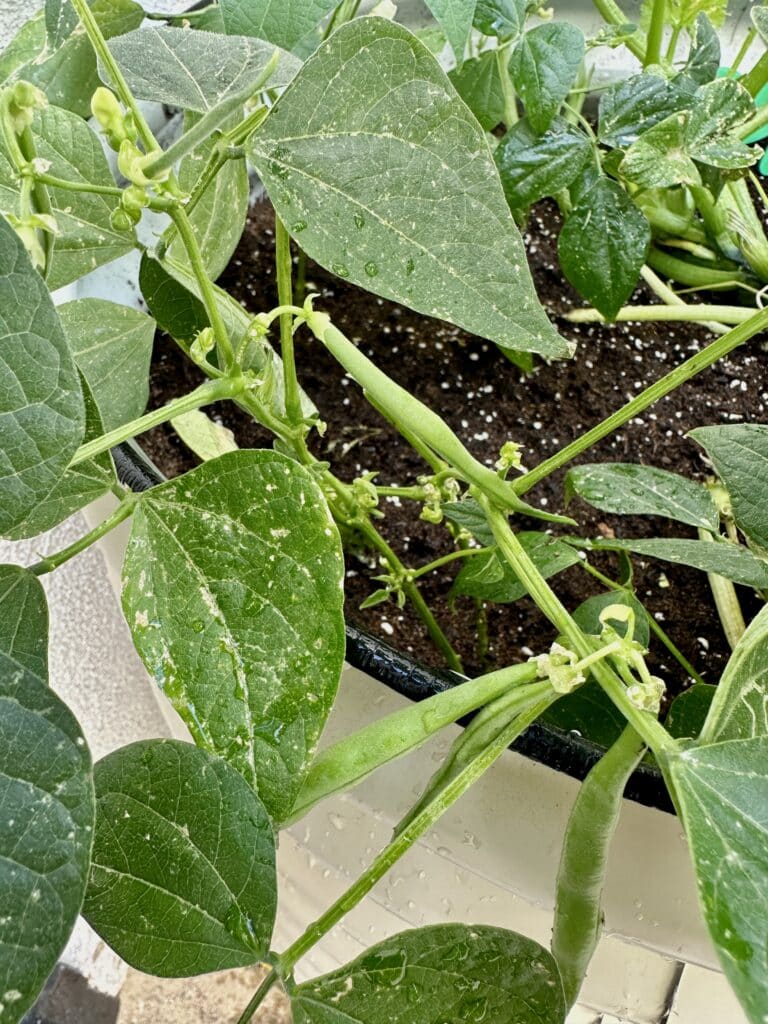
They’re non-fussy and mature quickly from seed.
They come in both bush and pole varieties, so you can choose the one that works best for your garden.
I love bush varieties.
Choose a bush bean variety if you’re using containers or are working with a small space.
Pole beans need to be supported with a trellis and are better suited for people with a larger space or those who don’t mind staking their plants.
They can usually be harvested in less than 50 days after planting seeds, AND they’ll keep producing for months.
Peas (60 Days)
Peas are another legume that grows quickly and easily.
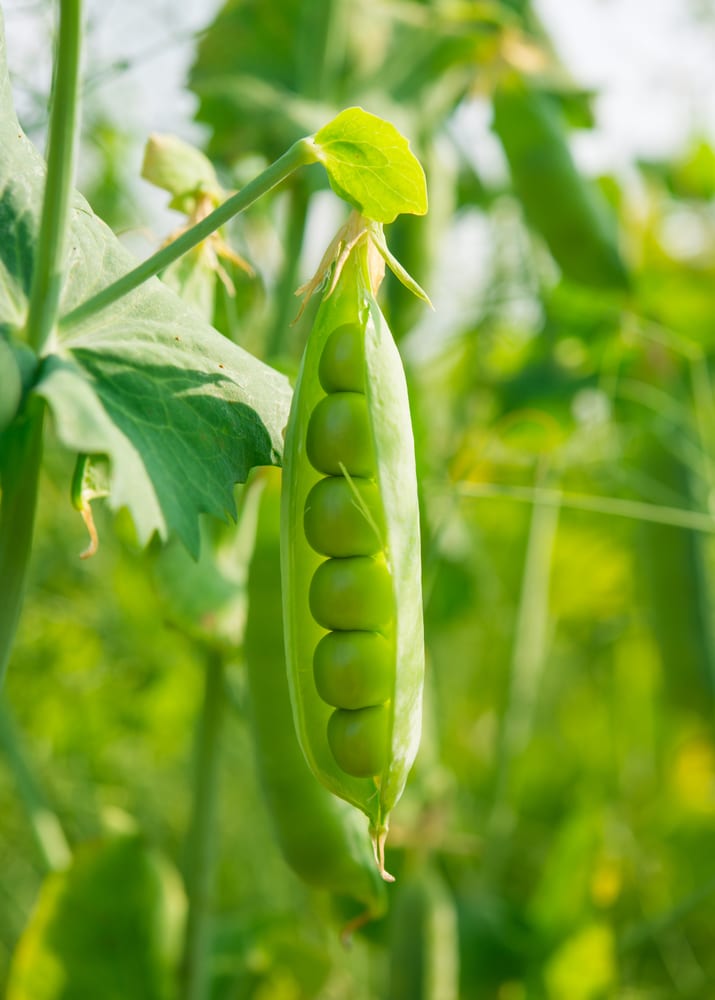
They come in shelling and snap varieties and can be grown on trellises or allowed to sprawl on the ground.
Peas have plenty of nutrients and are known for their high protein content.
You can harvest them in about 60 days after planting your seeds, and they’ll continue to produce until the weather gets too hot.
They’re delicious in salads, soups, and stir-fries or simply eaten raw as a snack!
Overall, legumes are a great choice for fast-growing vegetables that are easy to care for.
Fast-Maturing Herbs
If you’re looking for fast-growing herbs to add to your garden, a few options will yield results quickly. A kitchen herb garden is invaluable, especially if you cook most of your meals at home.
Here are three herbs that are known for their fast growth and short maturation times:
Cilantro
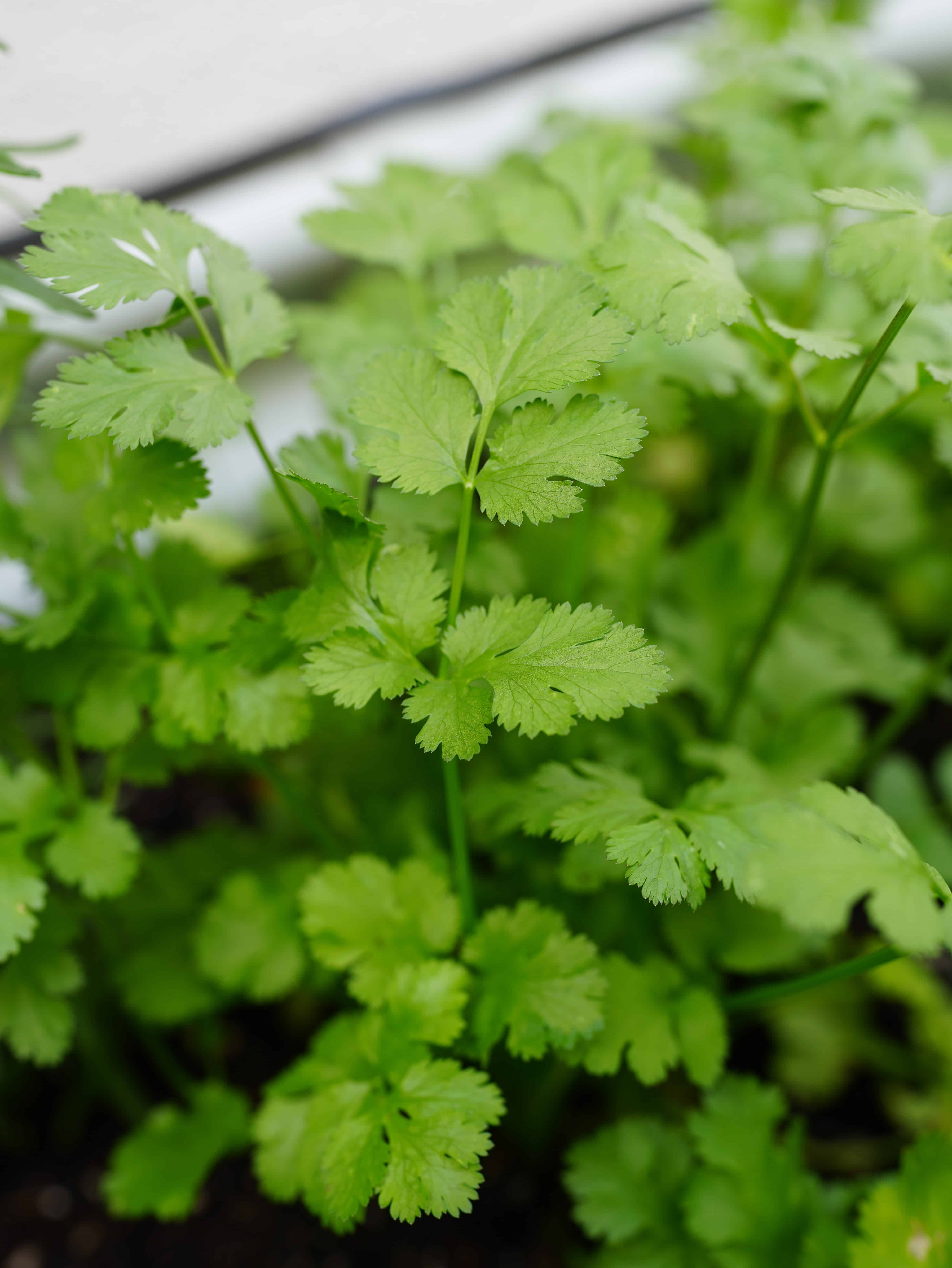
Cilantro adds unique flavor to various types of cuisine.
You can usually start harvesting in around 3-4 weeks after planting but it can blot quickly when temperatures rise.
It’s known for its fast growth and short maturation time.
If you want your cilantro plant to keep producing, make sure to prune regularly so it doesn’t grow too tall and produce seeds.
Avoid pruning more than one-third of the plant, however, or you’ll jeopardize its lifespan. This is a general rule of thumb for many plants: never prune more than 1/3 of it’ll stop growing and producing.
Plant the seeds in well-draining soil in a sunny location. Keep the soil moist and fertilize regularly. For more growing information, visit my post on How to Grow Cilantro.
Basil
Basil is another fast-growing herb that is easy to grow at home.
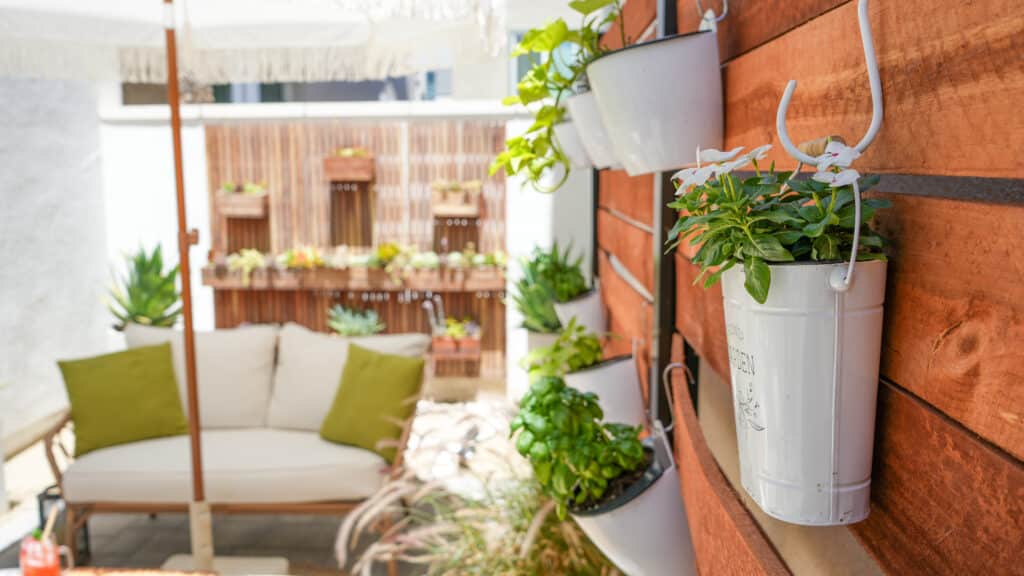
I love to keep a generous amount of basil plants in my small garden because I use the herb regularly in salads and sandwiches; my family loves it!
Basil has a sweet, slightly spicy flavor, depending on the variety, and is incredibly versatile in the kitchen.
Basil can be harvested in as little as 4-6 weeks after planting.
Plant the seeds in well-draining soil in a sunny location to grow basil.
You can also buy them as small plants. They transfer easily when replanted but make sure to keep as much of the soil on the root ball as you can when planting it in a new spot; don’t strip the roots as this only shocks the plant and can even prevent it from growing.
To encourage basil to grow bushy instead of upwards, pinch the plant’s tips and regularly harvest the leaves.
Harvesting will encourage new growth in the plant and keep it from going to seed.
Oregano
Oregano is another kitchen garden staple. It’s so flavorful whether it is used fresh or dry.
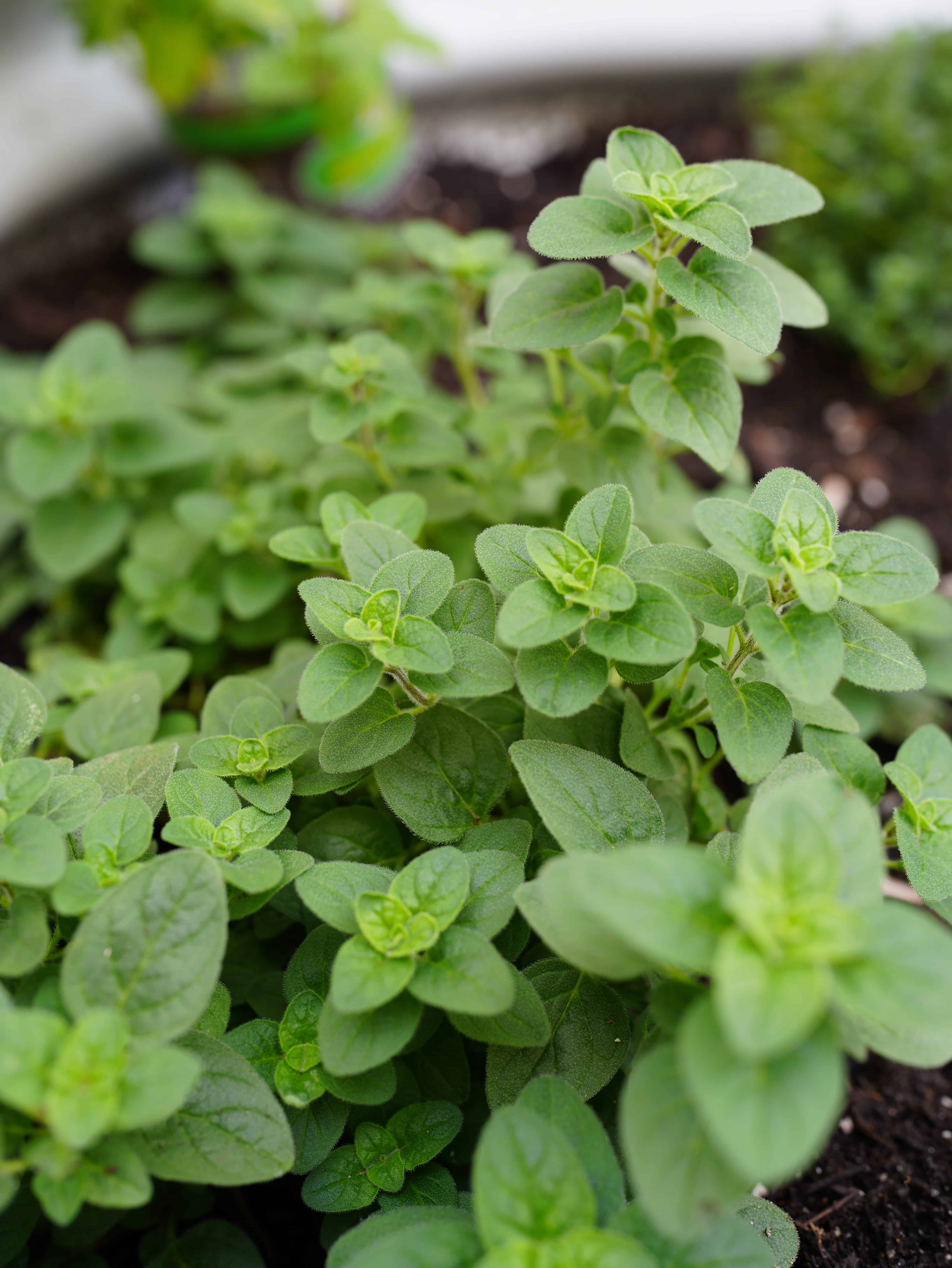
Oregano can be harvested in as little as 4-6 weeks after planting!
To grow oregano:
– Plant the seeds in well-draining soil and in a sunny location
– Keep the soil moist and fertilize regularly
– Harvest the leaves as needed, but always leave more than 1/3 of the plant intact so your plant can keep producing stems and leaves
Starting out with these fast-growing herbs will help give you confidence as a new vegetable gardener!
Essential Tips for Speedy Vegetable Growth
Use the following tips to help your vegetables grow quickly:
- Choose the Right Soil
Choose the right soil that has all the necessary nutrients for the vegetables. Compost, organic matter, and fertilizer at the right times all help increase the nutrients in the soil. Research each plant before adding these to your containers or garden beds! - Plant at the Right Time
Planting at the right time is crucial for the growth of vegetables. You should plant the vegetables when the weather is suitable for them. You can also use a greenhouse or a cold frame to extend the growing season. - Water Properly
Watering is so important for vegetables! You should water the plants regularly, but keep them from sitting in soggy soil. Soggy soil encourages fungus, mold, pests, and disease. Also aim to water the soil, not the foliage. - Provide Adequate Sunlight
Vegetables need sunlight to grow. You should choose a planting spot that receives at least six hours of sunlight daily. If you don’t have enough sunlight in your garden, you can use grow lights to provide the plants with the necessary light. Otherwise, try planting veggies that grow well in shade gardens. - Use Fertilizer
Fertilizer is essential for the growth of vegetables. You should use a balanced fertilizer that contains all the necessary nutrients.
Common Vegetable Gardening Challenges and Solutions
Growing vegetables is rewarding but comes with challenges, especially for beginners. Here are some common issues you may encounter when growing fast-growing vegetables, along with solutions to help you overcome them.
Pests
One of the most common challenges when growing vegetables is dealing with pests.
Some pests, like aphids and spider mites, can quickly infest your plants and cause damage.
Consider companion planting or introducing beneficial insects like ladybugs to prevent pests from taking over your garden.
Soil Quality
Try to use quality, organic soil for your vegetable and herb gardens.
Plants get nutrients for the soil, so using the right mix is crucial. Compost and organic matter are commonly added to soil when planting seedlings.
You can also apply fertilizer upon planting and then again a few weeks after that for heavy feeders, like zucchini.
However, be sure to read up on each vegetable’s needs before proceeding.
Watering
Watering your plants correctly is crucial!
Don’t overwater as this will lead to rot and disease, but don’t underwater as this can quickly kill the root systems of your vegetable plants.
The best time to water is in the morning, especially during summer.
This gives the roots enough time to soak in the water they need before the heat begins to dry things up.
Harvesting
Harvesting at the right time will help ensure you get the best flavor out of your plants.
You can harvest tomatoes when they’re still green and then let them riped on your countertop.
Other plants though, should be harvested when fully mature.
Research the best time to harvest each vegetable to ensure you get the most out of your garden.
By being aware of these common challenges and using the solutions provided, you can help to ensure that your fast-growing vegetables are healthy and thriving.
I hope you’ll get started with a few of these plants in your garden this year!